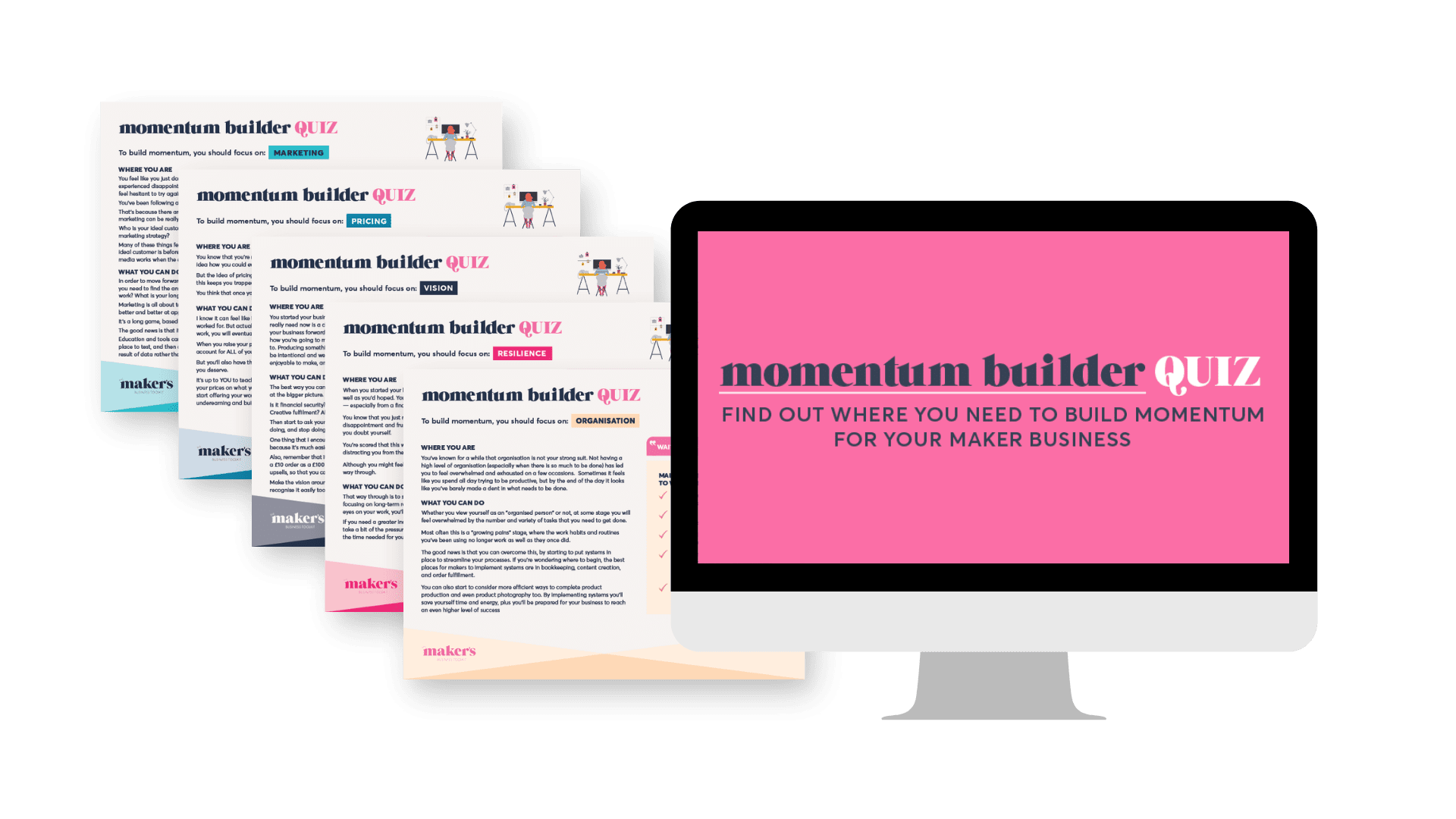Pricing is a tricky and emotive topic that even experienced makers struggle with.
When you are first setting out, there are lots of things you might have not considered that can affect your pricing.
Perhaps you didn’t account for the 40-50% commission that galleries or online marketplaces charge.
Perhaps you didn’t consider selling wholesale and that, in order to do so, you would need to be profitable at a wholesale price which is generally less than half of the price you charge to direct customers.
This can leave you in a sticky situation when you have become used to selling at one particular price and now, to gain access to a new market for your work, you need to raise your prices.
So what do you do?
You have to adjust your prices so that they can support the commission charged by every channel you want to sell through, even if it makes you feel uncomfortable. And it will.
(What’s a channel? It’s just a method of selling your work – e.g fairs, SOR, Wholesale, online marketplaces, etc)
So, if you want to sell through a SOR gallery that charges 45%, your prices must allow for that so that you still make enough profit. If you want to sell wholesale, your prices must allow for you to receive at best 50% of the retail price.
If your wholesale prices cannot support the commission or wholesale price required to sell through these channels then you have a choice.
RAISE YOUR PRICES. OR DON’T SELL THROUGH THAT CHANNEL
What you cannot do is charge one price on Etsy and at craft fairs, and another price through galleries.
Why not? Here are three very good reasons.
1️⃣ You will seriously upset your stockists
These guys work very hard to sell your work in a shop or gallery they have likely built with their own hands. They deal with selling to the customers, taking payments, wrapping your work, displaying it, business rates, rent, utilities and so much more. They provide a service to you that they deserve to be compensated for.
When you undercut them, you send a signal to them that you don’t understand or accept the value of this service. You make it much harder for them to sell your work and you essentially treat them like a source of free advertising. It’s highly disrespectful, dishonest, and it kills a potentially lucrative relationship quicker than anything else.
2️⃣ You will confuse your customers
When your customers see your work being sold for vastly different prices they won’t understand why. They won’t feel like they were getting a “bargain” when they bought your product for super cheap at a craft fair – they’ll be suspicious. When they buy your product at a gallery and then see it being sold for half the price at a craft fair they won’t understand.
Best case scenario they are confused. This is bad because, as the old marketing refrain goes, “A confused mind never buys.”
Worst case scenario, they think either you or the gallery they bought it from is ripping them off.
There are also lots of other pretty poor outcomes that are possible – they think your brand is tacky, they think your work isn’t for them, they think you are knocking off the brand they saw in a shop.
All of these are very bad.
3️⃣ You will lose the consistency and recognition that are so important for building a brand
So, in the examples above, we talked about the various responses your customers could have to seeing your work significantly cheaper in certain outlets.
What most of these have in common is that the customer doesn’t get the impression that you have a professional and consistent product offering. They may even assume that this is the work of two different makers.
One of the most important outcomes you want from any activity you take for your business is that it increases customer recognition of you and your offering.
(That’s why I don’t believe you should agree to wholesale arrangements that request unbranded packaging…but that’s another story)
Getting recognition for you and your work can be one of the biggest uphill struggles in your business, but it gives you such momentum when it happens.
All the time you spend at events, all of the money you spend on advertising, all of the social media and email marketing you do. It’s all to raise recognition and knowledge of you and your work. Don’t throw all of that effort away because you’re afraid to raise your prices.
Raising prices is hard. It makes everyone uncomfortable. When you have been selling at an artificially low price and you need to raise your prices a lot it can really hurt.
The key is to consider the long term growth of your business.
If your current pricing can’t support a certain channel, then you either have to raise prices, or not sell through that channel.
Those are your only choices.
You need to consider where your business is going to see the most growth. If you’re happy selling just on Etsy and in person at fairs, and you are able to produce and sell your products in enough volume to make a comfortable living doing so, then absolutely go for it. But, if that’s not the case and what you’re doing is in fact not sustainable then you need to do whatever it takes to get into different retail channels. That might mean raising your prices.








